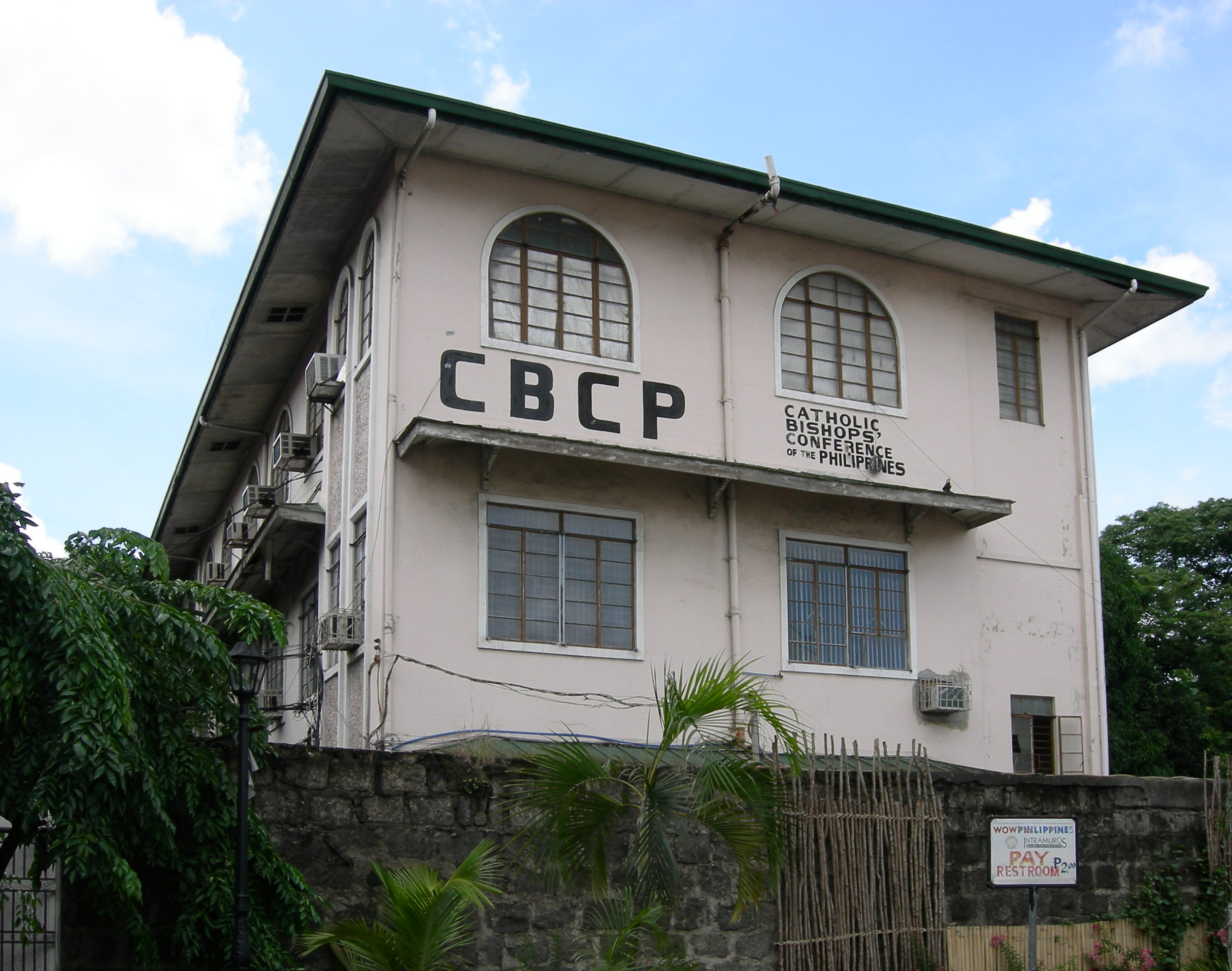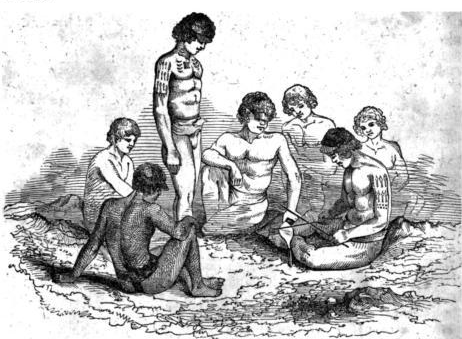|
Episcopal Conference Of The Pacific
The Episcopal Conference of the Pacific ( la, Conferentia Episcopalis Pacifici) (CEPAC) is the episcopal conference of the Catholic Church that includes the bishops of several islands in Oceania. The CEPAC is a member of the Federation of Catholic Bishops' Conferences of Oceania, FCBCO. Member dioceses of CEPAC Ecclesiastical Province of Agaña *Roman Catholic Archdiocese of Agaña, Archdiocese of Agaña (Guam) *Diocese of Chalan Kanoa (Northern Mariana Islands) *Diocese of Caroline Islands (Palau and Federated States of Micronesia) *Apostolic Prefecture of the Marshall Islands (Marshall Islands) Ecclesiastical Province of Nouméa *Archdiocese of Nouméa (New Caledonia) *Roman Catholic Diocese of Port-Vila, Diocese of Port-Vila (Vanuatu) *Roman Catholic Diocese of Wallis et Futuna, Diocese of Wallis et Futuna (Wallis and Futuna) Ecclesiastical Province of Papeete *Archdiocese of Papeete (French Polynesia) *Roman Catholic Diocese of Taiohae o Tefenuaenata, Diocese of Taiohae or T ... [...More Info...] [...Related Items...] OR: [Wikipedia] [Google] [Baidu] |
Episcopal Conference
An episcopal conference, sometimes called a conference of bishops, is an official assembly of the bishops of the Catholic Church in a given territory. Episcopal conferences have long existed as informal entities. The first assembly of bishops to meet regularly, with its own legal structure and ecclesial leadership function, is the Swiss Bishops' Conference, which was founded in 1863. More than forty episcopal conferences existed before the Second Vatican Council. Their status was confirmed by the Second Vatican Council and further defined by Pope Paul VI's 1966 '' motu proprio'', '' Ecclesiae sanctae''. Episcopal conferences are generally defined by geographic borders, often national ones, with all the bishops in a given country belonging to the same conference, although they may also include neighboring countries. Certain authority and tasks are assigned to episcopal conferences, particularly with regard to setting the liturgical norms for the Mass. Episcopal conferences rec ... [...More Info...] [...Related Items...] OR: [Wikipedia] [Google] [Baidu] |
Wallis And Futuna
Wallis and Futuna, officially the Territory of the Wallis and Futuna Islands (; french: Wallis-et-Futuna or ', Fakauvea and Fakafutuna: '), is a French island collectivity in the South Pacific, situated between Tuvalu to the northwest, Fiji to the southwest, Tonga to the southeast, Samoa to the east, and Tokelau to the northeast. Mata Utu is its capital and largest city. Its land area is . It had a population of 11,558 at the 2018 census (down from 14,944 at the 2003 census). The territory is made up of three main volcanic tropical islands and a number of tiny islets. It is divided into two island groups that lie about apart: the Wallis Islands (also known as Uvea) in the northeast; and the Hoorn Islands (also known as the Futuna Islands) in the southwest, including Futuna Island proper and the mostly uninhabited Alofi Island. Since 28 March 2003, Wallis and Futuna has been a French overseas collectivity ('' collectivité d'outre-mer'', or ''COM''). Between 1961 ... [...More Info...] [...Related Items...] OR: [Wikipedia] [Google] [Baidu] |
Cook Islands
) , image_map = Cook Islands on the globe (small islands magnified) (Polynesia centered).svg , capital = Avarua , coordinates = , largest_city = Avarua , official_languages = , languages_type = Spoken languages , languages = , ethnic_groups = , ethnic_groups_year = 2016 census , demonym = Cook Islander , government_type = , leader_title1 = Monarch , leader_name1 = , leader_title2 = 's Representative , leader_name2 = Sir Tom Marsters , leader_title3 = Prime Minister , leader_name3 = Mark Brown , leader_title4 = President of the House of Ariki , leader_name4 = Tou Travel Ariki , legislature = Parliament , sovereignty_type = Associated state of New Zealand , established_event1 = Self-governance , established_date1 = 4 August 1965 , establi ... [...More Info...] [...Related Items...] OR: [Wikipedia] [Google] [Baidu] |
Roman Catholic Diocese Of Rarotonga
The Roman Catholic Diocese of Rarotonga (Latin: ''Dioecesis Rarotongana'') in the Cook Islands is a suffragan diocese of the Roman Catholic Archdiocese of Suva in neighbouring Fiji. It was erected as the Prefecture Apostolic of Cook and Manihiki in 1922, elevated to the Vicariate Apostolic of Cook Islands in 1948 and elevated as the Diocese of Rarotonga in 1966. Bishops *Bernardin Castanié, C.I.M. (1923–1939) *John David Hubaldus Lehman, C.I.M. (1939–1959) * Hendrick Joseph Cornelius Maria de Cocq, SS.CC. (1964–1971) *John Hubert Macey Rodgers, S. M. (1973–1977) * Denis George Browne (1977–1983) * Robin Walsh Leamy, S. M. (1984–1996) * Stuart France O'Connell, S. M. (1996–2011) *Paul Donoghue, S.M. (2011– ) Education Primary Schools Saint Josephs School, Rarotonga Saint Mary's School, Mauke Island (now closed down) Secondary (High) School Nukutere College, Rarotonga Churches Catholic Cathedral of Rarotonga (and the Cook Islands) Saint Joseph' ... [...More Info...] [...Related Items...] OR: [Wikipedia] [Google] [Baidu] |
Fiji
Fiji ( , ,; fj, Viti, ; Fiji Hindi: फ़िजी, ''Fijī''), officially the Republic of Fiji, is an island country in Melanesia, part of Oceania in the South Pacific Ocean. It lies about north-northeast of New Zealand. Fiji consists of an archipelago of more than 330 islands—of which about 110 are permanently inhabited—and more than 500 islets, amounting to a total land area of about . The most outlying island group is Ono-i-Lau. About 87% of the total population of live on the two major islands, Viti Levu and Vanua Levu. About three-quarters of Fijians live on Viti Levu's coasts: either in the capital city of Suva; or in smaller urban centres such as Nadi—where tourism is the major local industry; or in Lautoka, where the sugar-cane industry is dominant. The interior of Viti Levu is sparsely inhabited because of its terrain. The majority of Fiji's islands were formed by volcanic activity starting around 150 million years ago. Some geothermal activity st ... [...More Info...] [...Related Items...] OR: [Wikipedia] [Google] [Baidu] |
Roman Catholic Archdiocese Of Suva
The Roman Catholic Archdiocese of Suva (Latin: ''Archidioecesis Suvana'') is a Metropolitan Archdiocese in Fiji. It is responsible for the suffragan dioceses of Rarotonga and Tarawa and Nauru and —as of 21 March 2003—the Mission ''Sui Iuris'' of Funafuti. The archdiocese was created in 1966, to succeed the Apostolic Vicariate of Fiji. Bishops Ordinaries Bishops * (1863–1887) *Julien Vidal (1887–1922) * Charles-Joseph Nicolas (1922–1941) *Victor Frederick Foley (1944–1967) Archbishops *George Hamilton Pearce (1967–1976) *Petero Mataca (1976–2012) * Peter Loy Chong (since 2013) Coadjutor vicar apostolic * Charles-Joseph Nicolas (1918-1922) Auxiliary bishop *Petero Mataca (1974-1976), appointed Archbishop here Sex abuse cases On 13 July 2020, New Zealand's 1News revealed that of some of the clergy who were accused in 1,300 cases of sexually abusing children in the nation of Fiji were originally from New Zealand before they were transferred. The trans ... [...More Info...] [...Related Items...] OR: [Wikipedia] [Google] [Baidu] |
Tokelau
Tokelau (; ; known previously as the Union Islands, and, until 1976, known officially as the Tokelau Islands) is a dependent territory of New Zealand in the southern Pacific Ocean. It consists of three tropical coral atolls: Atafu, Nukunonu, and Fakaofo. They have a combined land area of . The capital rotates yearly among the three atolls. In addition to these three, Swains Island, which forms part of the same archipelago, is the subject of an ongoing territorial dispute; it is currently administered by the United States as part of American Samoa. Tokelau lies north of the Samoan Islands, east of Tuvalu, south of the Phoenix Islands, southwest of the more distant Line Islands, and northwest of the Cook Islands. Tokelau has a population of approximately 1,500 people; it has the fourth-smallest population of any sovereign state or dependency in the world. As of the 2016 census, around 45% of its residents had been born overseas, mostly in Samoa or New Zealand. The popu ... [...More Info...] [...Related Items...] OR: [Wikipedia] [Google] [Baidu] |
American Samoa
American Samoa ( sm, Amerika Sāmoa, ; also ' or ') is an unincorporated territory of the United States located in the South Pacific Ocean, southeast of the island country of Samoa. Its location is centered on . It is east of the International Date Line, while Samoa is west of the Line. The total land area is , slightly more than Washington, D.C. American Samoa is the southernmost territory of the United States and one of two U.S. territories south of the Equator, along with the uninhabited Jarvis Island. Tuna products are the main exports, and the main trading partner is the rest of the United States. American Samoa consists of five main islands and two coral atolls. The largest and most populous island is Tutuila, with the Manuʻa Islands, Rose Atoll and Swains Island also included in the territory. All islands except for Swains Island are part of the Samoan Islands, west of the Cook Islands, north of Tonga, and some south of Tokelau. To the west are the islands ... [...More Info...] [...Related Items...] OR: [Wikipedia] [Google] [Baidu] |
Diocese Of Samoa-Pago Pago
In church governance, a diocese or bishopric is the ecclesiastical district under the jurisdiction of a bishop. History In the later organization of the Roman Empire, the increasingly subdivided provinces were administratively associated in a larger unit, the diocese (Latin ''dioecesis'', from the Greek term διοίκησις, meaning "administration"). Christianity was given legal status in 313 with the Edict of Milan. Churches began to organize themselves into dioceses based on the civil dioceses, not on the larger regional imperial districts. These dioceses were often smaller than the provinces. Christianity was declared the Empire's official religion by Theodosius I in 380. Constantine I in 318 gave litigants the right to have court cases transferred from the civil courts to the bishops. This situation must have hardly survived Julian, 361–363. Episcopal courts are not heard of again in the East until 398 and in the West in 408. The quality of these courts was lo ... [...More Info...] [...Related Items...] OR: [Wikipedia] [Google] [Baidu] |
Samoa
Samoa, officially the Independent State of Samoa; sm, Sāmoa, and until 1997 known as Western Samoa, is a Polynesian island country consisting of two main islands (Savai'i and Upolu); two smaller, inhabited islands (Manono Island, Manono and Apolima); and several smaller, uninhabited islands, including the Aleipata Islands (Nu'utele, Nu'ulua, Fanuatapu and Namua). Samoa is located west of American Samoa, northeast of Tonga (closest foreign country), northeast of Fiji, east of Wallis and Futuna, southeast of Tuvalu, south of Tokelau, southwest of Hawaii, and northwest of Niue. The capital city is Apia. The Lapita culture, Lapita people discovered and settled the Samoan Islands around 3,500 years ago. They developed a Samoan language and Samoan culture, Samoan cultural identity. Samoa is a Unitary state, unitary Parliamentary system, parliamentary democracy with 11 Administrative divisions of Samoa, administrative divisions. It is a sovereign state and a member of the ... [...More Info...] [...Related Items...] OR: [Wikipedia] [Google] [Baidu] |
Archdiocese Of Samoa-Apia
In church governance, a diocese or bishopric is the ecclesiastical district under the jurisdiction of a bishop. History In the later organization of the Roman Empire, the increasingly subdivided provinces were administratively associated in a larger unit, the diocese (Latin ''dioecesis'', from the Greek term διοίκησις, meaning "administration"). Christianity was given legal status in 313 with the Edict of Milan. Churches began to organize themselves into dioceses based on the civil dioceses, not on the larger regional imperial districts. These dioceses were often smaller than the provinces. Christianity was declared the Empire's official religion by Theodosius I in 380. Constantine I in 318 gave litigants the right to have court cases transferred from the civil courts to the bishops. This situation must have hardly survived Julian, 361–363. Episcopal courts are not heard of again in the East until 398 and in the West in 408. The quality of these courts was lo ... [...More Info...] [...Related Items...] OR: [Wikipedia] [Google] [Baidu] |






